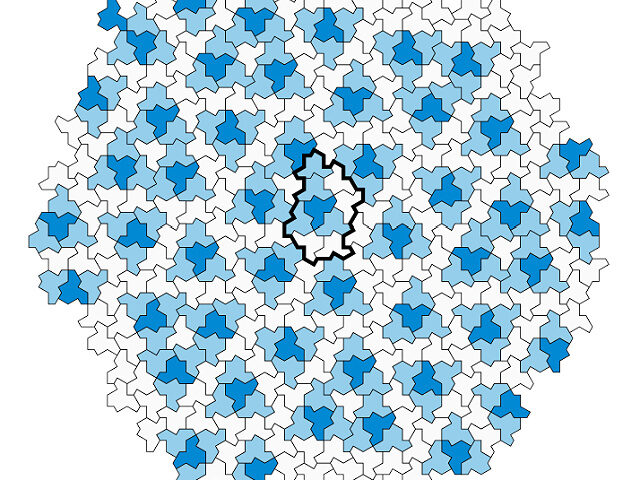An amateur mathematician in the United Kingdom may have solved a 60-year-old problem in geometry, garnering the attention of researchers.
CNN reported David Smith, a retired printing technician, has discovered a shape known as an “einstein,” which can be tiled over a surface without the pattern repeating. The outlet noted mathematicians first began working on this problem in the 1960s.
Smith and three coauthors, Joseph Samuel Myers, Craig S. Kaplan, and Chaim Goodman-Strauss, published a paper explaining Smith’s finding.
Smith, who says he is “always looking for an interesting shape,” wrote a blog post to serve as a “scrapbook” of his experiments with non-repeating tiles in which he thanked his three coauthors for the “super human effort” they expended helping him make his work public.
Live Science reported that mathematicians have long debated whether such shapes could even exist and, if so, what form they might take:
For decades, mathematicians wondered if it was possible to find a single special shape that could perfectly tile a surface, without leaving any gaps or causing any overlaps, with the pattern never repeating. Of course, this is trivial to do with a pattern that repeats — just look at a bathroom or kitchen floor, which is probably made up of simple rectangular tiles. If you were to pick up your floor and move it (called a “translation” in mathematics), you could find a position where the floor looks exactly the same as before, proving that it’s a repeating pattern.
Stanford Professor Rafe Mazzeo observed that Smith’s finding could have applications in physics, chemistry, and other fields, per CNN.
“This new discovery is a strikingly simple example. There are no standard techniques known for finding new aperiodic tiles, so this involved a really new idea. That is always exciting,” he said.
Smith told CNN his success in finding novel shapes does not stem from an aptitude for math but instead from persistence and the help of his collaborators.
“I’m not really into math, to be honest — I did it at school, but I didn’t excel in it,” he said. “That’s why I got these other guys involved, because there’s no way I could have done this without them. I discovered the shape, which was a bit of luck, but it was also me being persistent.”

COMMENTS
Please let us know if you're having issues with commenting.